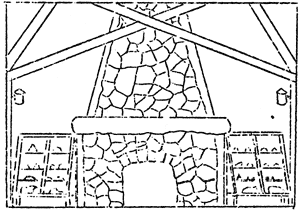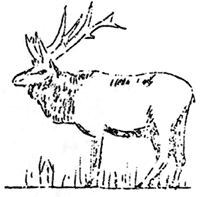|
Volume II No. 2 - August 1, 1929
Crater Lake Museum Notes
By Miss Mable Hibbard, Ranger Naturalist
We are happy to announce the receipt of several donations for the
Natural History Library in the museum. As the Government makes no
appropriation for the purchase of books for library use these
expressions of generosity are very much appreciated.
The collection of rock specimens has been increased with materials
from many of the interesting lava flows about the Lake.
Study skins of the Bushy-tailed Woodrat and both adult and immature
marmot have been added to the mammal case.
The only reptile heretofore collected in the Park is the Mountain
Garter Snake, found by Dr. Loye Miller in July, 1926. Sections of the
skin cast of two others have now been brought in from Wizard Island, and
the presence of a live garter snake has been reported recently by one of
the workmen.
A collection of insects injurious to the forest trees of the Park is
almost ready to install in the wall cases which now contain the most
representative specimens of the region.
One of the most popular features of the museum is the cut wild
flower exhibit which totals over one hundred twenty-five specimens.
Here visitors can identify at close range the flowers which they have
seen in the Park, whether along the roadside, trail or in the numerous
meadows.
The daily visitors to the museum usually number over two hundred.
This attendance is an encouraging indication of increasing interest in
museum exhibits.


The interest of tourists is always aroused by the animals of our
National Parks. Elk are not native in the region of Crater Lake, but
recently several herds have been reported from the east side along the
Rim Road. During future years Elk may become a regular attraction to
visitors.
A herd of these animals was brought to Oregon from Jackson Hole
country of Wyoming, by the State Game Commission. They were kept for a
time in a game farm, and later distributed to various parts of the
state. About twelve head were placed in Klamath County, east of Crater
Lake, in 1913. This small herd has increased and now numbers over two
hundred which have spread throughout the Cascade Range in this
vicinity.
Three separate herds are known to be roaming about the Crater Lake
region, one near Mount McLoughlin and one near Red Blanket, toward the
south, both being outside the Park area, although the latter is reported
occasionally within the south boundary. The third group is found about
the slopes of Scott Peak. This is the herd which has been observed this
season.
| 
